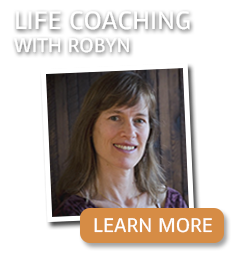SPANDA AND THE YOGA OF RELATIONSHIPS
 In yoga, the word spanda refers to the constant pulsation or vibration in all things in the universe- down to the smallest particles. And Physics now confirms this. Everything expands and contracts. In our daily lives, we experience it as the pulse between day and night; the light of the full moon and dark of the new moon; having energy and feeling tired; feeling happy vs. sad or angry, etc. And we know through yoga that poses like back bends make us feel open and expanded whereas poses like forward bends and reclining poses are quieting and turn us inward. So yoga is not saying that expansion is better than contraction. Instead, it’s affirming that both are natural and important phases of life and we need to find a balance between them. At the same time, yogic practices are teaching us how to be able to contain and sustain more positive energy over time. Read my Growing Positive Experiences post for ways to do this off the mat.
In yoga, the word spanda refers to the constant pulsation or vibration in all things in the universe- down to the smallest particles. And Physics now confirms this. Everything expands and contracts. In our daily lives, we experience it as the pulse between day and night; the light of the full moon and dark of the new moon; having energy and feeling tired; feeling happy vs. sad or angry, etc. And we know through yoga that poses like back bends make us feel open and expanded whereas poses like forward bends and reclining poses are quieting and turn us inward. So yoga is not saying that expansion is better than contraction. Instead, it’s affirming that both are natural and important phases of life and we need to find a balance between them. At the same time, yogic practices are teaching us how to be able to contain and sustain more positive energy over time. Read my Growing Positive Experiences post for ways to do this off the mat.
In relationships, understanding the concept of spanda is crucial for harmony. Since we’re all contracting and expanding in different ways, it can get tricky when we’re in a phase of contraction and our partner is expanding. Likewise, it can be challenging when we think we’re supposed to be expanding and yet we feel contracted. So the first step is to accept that spanda happens individually as well as in partnership. We may expand through a deep connection in love-making or conversation, sharing a fun night out or on vacation. And then we may contract by starting a fight, getting sick or getting critical. But just like in yoga, with practice, we can learn to live in greater states of expansion for longer periods of time.
Here’s how:
First, realize that after expansion, the body’s natural impulse is to contract in some way; it’s a natural human response to maintain an inner sense of balance and comfort. Same with the mind. If fact, for most of us, it may feel scary to be too open for too long. We may not feel safe. We may have old associations that we “shouldn’t have too much fun.” Or we may be programmed to “wait for that other shoe to drop.” So we may have trained ourselves to unconsciously contract after expansive experiences, shutting down the positive energy in order to avoid pain. Giving yourself compassion for this is important. And you don’t have to understand your entire psychology to simply send yourself some compassionate understanding for whatever your specific patterns are for contracting after expanding. And starting with compassion can soften the impulse to contract.
Next, what helps to avoid unfriendly or painful experiences of contraction in relationships is to take time to integrate positive experiences by giving ourselves some space. (Again, see the Growing Positive Experiences post about how to expand positive energy in the moment). After a deep connection with our partner or a fun social experience, taking some space to integrate the positive energy really helps. This may look like taking a walk, resting, writing in our journal, taking a bath, meditation, sitting in nature, etc., sort of like resting in savasana (corpse pose) after practicing a yoga sequence. When we take time and space for ourselves, we are allowing our nervous systems to integrate the positive energy in a harmonious way so that we don’t have an unconscious contraction that is less harmonious.
Its’ also helpful to recognize that we all have different set points for our desire and ability to be close. Again, this may have gotten set up very early in life, based on our childhood experiences. But nonetheless, it’s helpful to respect what our own natural impulses and needs are around closeness. Some of us can tolerate and enjoy a lot of closeness and like to merge. Others require more space. And naturally, couples often have opposite needs and timing with this.
Luckily, both Patrick and I like to be close and really like our solo time in about the same amount. But sometimes, one of us wants to be close when the other is needing some space. What I find helps with this is simply to communicate about it. But you have to know what you need in order to communicate it.
The other day, on our way home from a trip together, Patrick got irritated about something he lost and then wanted to blast the music in the car driving home, and so he did. I realized he was probably wanting some space after all the traveling together, but of course, there I was in the car next to him, not at all appreciating the loud music. In fact, I had been hoping to have an intimate conversation since we’d spent so much time on airplanes and with family. So I was sad and angry that he started blasting the music without communicating his needs to me. Once I shared my feelings and thoughts, he was able to see what happened and we came to some mutual understanding and returned to ease. (If I hadn’t communicated my feelings, I would’ve been stewing in my resentment for hours and we would have furthered our distance). Other times, he’s clear about his needs and simply states he’s taking some space. Even though I may be sad, I can more easily flow with it when he communicates his needs than when there’s some sort of abrupt conflict or separation without communication. When we take the space we need, we integrate whatever is happening and then can reunite with greater ease.
So both time together and time apart are important in intimate relationships. This is the spanda of relationships. When we understand its value and learn to listen to and communicate our individual needs, we can create more harmony together. Over time we expand into greater intimacy and connection.








